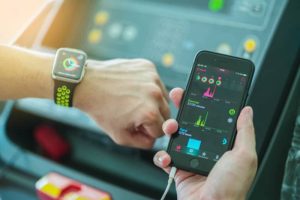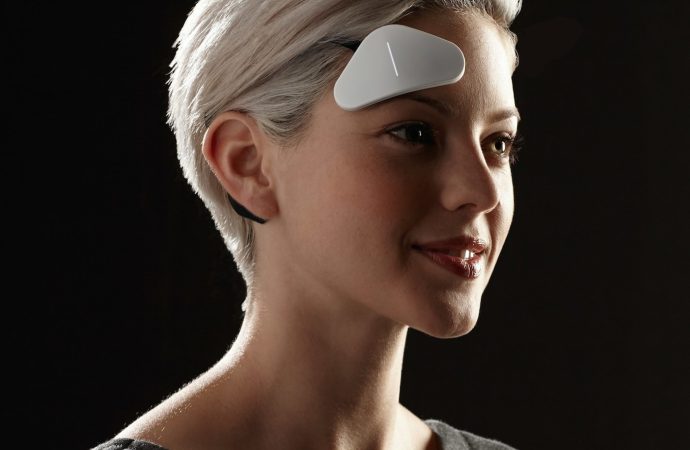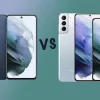Innovative, convenient, and endlessly fascinating—wearable technology has revolutionized how we approach both fitness and health. No longer just a futuristic gadget, wearables have embedded themselves into our daily lives. From tracking steps and heart rates to analyzing sleep patterns and oxygen levels, wearables empower users to monitor their health and elevate their fitness routines. This
Innovative, convenient, and endlessly fascinating—wearable technology has revolutionized how we approach both fitness and health. No longer just a futuristic gadget, wearables have embedded themselves into our daily lives. From tracking steps and heart rates to analyzing sleep patterns and oxygen levels, wearables empower users to monitor their health and elevate their fitness routines.
This blog dives into how wearable tech has evolved, the impact it has on personal health monitoring, inspiring success stories, and future trends shaping this industry. Whether you’re a tech enthusiast, a fitness junkie, or just starting your wellness journey, this guide will help you better understand how wearables fit into your life.
The Evolution of Wearable Technology in Fitness

Image by Yandex.com
Wearable technology first gained mainstream attention with the introduction of fitness trackers in the early 2010s. Pioneering devices like the Fitbit became household names, tracking basic metrics such as steps, calories burned, and distance traveled. Though simple, these devices triggered a seismic shift in how people approached personal fitness.
Over the years, wearables have become far more sophisticated. Today’s devices include advanced features like heart rate monitoring, sleep tracking, and real-time ECG analysis. Brands like Apple, Garmin, and WHOOP are employing cutting-edge technologies—biometrics and machine learning included—that provide users with myriads of personalized insights. Wearables are no longer passive trackers but active facilitators in achieving health goals.
The Impact of Wearable Tech on Personal Health Monitoring
Modern wearable technology enables individuals to actively engage with and monitor their health in ways that were previously only available in clinical settings:
- Heart Health: With devices like the Apple Watch or Fitbit, users can monitor resting and active heart rates, detect irregular activity (such as atrial fibrillation), and even generate health reports to share with physicians.
- Sleep Quality: Wearables analyze sleep cycles—REM, light sleep, and deep sleep—allowing users to make lifestyle adjustments that positively impact energy and well-being.
- Activity Levels: From tracking daily step counts to measuring VO2 max and calorie expenditures, wearable tech has made it easier than ever to understand one’s fitness routines.
- Oxygen Saturation and Stress Levels: Features like SpO2 monitoring provide insights into how well oxygen circulates through the bloodstream, while stress-scoring systems help users identify when they need to slow down.
This collected health data is not just helpful for individuals; it also empowers researchers and healthcare professionals by contributing valuable insights that shape public health trends.
Case Studies: Success Stories of Wearable Tech Users
Emma’s Story – Recovering Yoga Fanatic
After a serious ankle injury, Emma struggled to regain her fitness confidence. Initially hesitant about wearable tech, she decided to invest in a Garmin Vivosmart device to track her recovery progress. The constant feedback about her heart rate and stress levels motivated her to gradually resume yoga sessions—until one day, her Garmin cheered her on when she hit her weekly activity target. “My wearable turned into a coach that never judged me but always encouraged me when I needed it most,” Emma shared.
Mike’s Marathon Miracle
Mike was preparing for his first marathon when his smartwatch issued an alert about irregular heart rhythm during one of his training sessions. Concerned, he consulted his doctor and discovered early signs of atrial fibrillation—a condition that could have worsened without early detection. Thanks to that one notification, Mike sought medical treatment, adjusted his workouts, and is now training for his second race with renewed confidence.
These examples highlight how wearables go beyond simple gadgets—they are potentially life-changing tools for health and wellness.
The Future of Wearable Tech in Fitness and Health
The future of wearable technology is brimming with possibility. Advances like artificial intelligence, machine learning, and immersive technology are driving innovation at a breakneck pace. Some trends that are shaping the future include:
- Smarter Sensors: The next generation of wearables will feature sensors that can measure blood glucose levels, hydration, and even mental focus.
- Personalized Coaching: AI-powered wearables will offer real-time feedback paired with tailored workout plans that adapt to changing health metrics.
- Wearables as Preventative Tools: Devices will continue to prioritize early detection for chronic diseases, including diabetes, cardiovascular problems, and sleep apnea.
- VR & AR Integration: The use of augmented reality (AR) in wearable devices may soon provide immersive fitness sessions and holographic health coaching.
These forward-thinking advancements will transform how individuals interact with their health, advancing public and personal well-being in profound ways.
Tips for Choosing the Right Wearable Tech Device

Image by Yandex.com
With so many options available, here are a few tips to ensure you find the perfect wearable for your needs:
- Set Your Health Goals: Want to improve your fitness? Look for wearables optimized for workouts. Interested in heart health? Choose devices offering advanced biometrics like ECG analysis.
- Prioritize Features: Focus on must-have features such as sleep tracking, SpO2 monitoring, or GPS capabilities for outdoor fun.
- Check Compatibility: Verify that the wearable is compatible with your smartphone or tablet for seamless syncing.
- Compare Battery Life: Longer battery life means less frequent charging, resulting in more uninterrupted data tracking.
- Read Reviews: Explore user feedback and expert reviews to understand a wearable’s strengths and weaknesses.
By considering these factors, you can find a device that empowers your health and fitness goals without unnecessary extras.
The Role of Wearable Tech in Motivation and Engagement
One of the biggest challenges in fitness is maintaining long-term motivation, and wearable tech tackles this issue head-on with gamification features that appeal to the competitive spirit.
- Fitness Badges & Achievements: Weekly or monthly challenges inspire users to push themselves and hit activity goals consistently.
- Community Engagement: Most wearable apps feature online communities where users can celebrate milestones, share tips, and collaborate on group challenges.
- Continuous Feedback: With insights delivered in real-time, you’ll always know where you stand and what’s needed to progress toward your personal goals.
Wearable tech doesn’t just track progress—it reinvents the entire fitness experience, turning it into an exciting and rewarding lifestyle.
Take Charge of Your Fitness Journey
Wearable technology has boldly reshaped fitness and health monitoring, offering tools that are as innovative as they are convenient. From real-time health tracking to fostering a supportive fitness community, these devices are influences of positive change in modern wellness.
The question isn’t if wearable tech can help you—it’s when you’ll take the plunge. Evaluate your goals, pick the perfect device, and start making every step count.
















